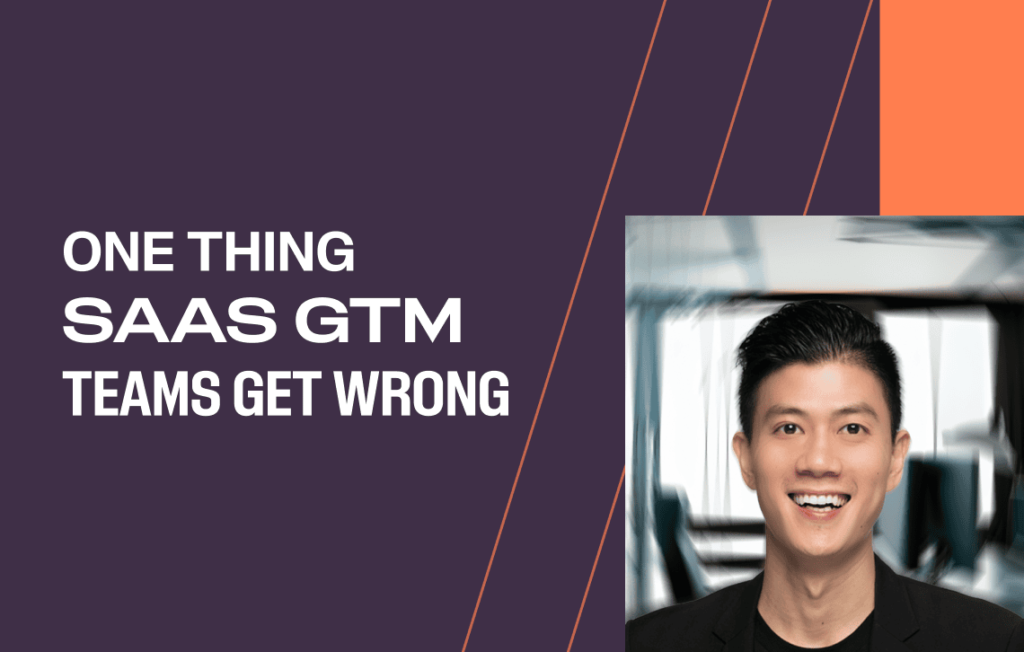Key takeaways:
- The buying cycle is more complex than ever, with increased scrutiny from finance.
- Every business needs a customer-led growth motion to stay in business for the long term.
- Go-to-market teams need to prioritize customer ROI as the driver of decision-making, metrics tracking, and relationship management.
Account executives can’t sell like it’s 2017 anymore.
Buyers are more educated, and the buying process is more complex than it once was.
In the past, you might be able to convince a single decision-maker and sell a relatively large deal. Now, you have to win over a lot more stakeholders to get the next logo, and it’s not unlikely that you might lose for reasons outside your control.
So, what’s a go-to-market (GTM) team to do?
In a recent episode of The Jasons take on, Totango co-CEO Edward Chiu explained more about what GTM teams get wrong—and what they can do to fix it.
A dated focus
For years, getting to “product-market fit” was the holy grail. Hit that, and you aren’t even really selling, you’re simply fielding contracts.
But then changes in the economy and competitive landscape ended with a decree from finance: cut software spend.
“[Software] is the first line item for CFOs and finance executives to trim costs, because the next one is layoffs or human capital costs,” Edward said.
Now, the buying cycle is a lot more complex:
- The decision maker and core users need to be bought in.
- The primary users’ day-to-day counterparts (e.g. Marketing if selling to sales, or vice versa) want to be prepped and demo’ed to see if the solution can help them as well.
- CFOs need to see how the tool reports on the value it creates, in order to justify the budget line item.
The complexity means that quota attainment is getting harder. And that’s if sales reps are even still able to do it—over 60% of account executives are not hitting quota. The reality is companies need customer-led growth, not new-logo-led growth, to ride out economic ebbs and flows successfully and stay in business for the long term.
“This is a crazy world we live in where everything is viewed in a very, very tiny microscope before anything gets purchased,” said Edward. “This is where customer-led growth comes in.”
The customer-led growth ROI paradigm
Is your solution getting your customer champion promoted?
That’s the new paradigm question, because answering it requires three elements that directly tie to the ROI a customer gets from your platform.
This includes:
- Understanding the customer’s desired outcomes.
- Delivering those desired outcomes directly or via proxy with your platform or software.
- Illustrating and communicating value in a way that clearly shows how your tool helps drive those desired outcomes.
“Your job as a CSM is to help your customers leverage your tool to the maximum capabilities to create ROI for them, to get them promoted,” said Edward.
Internally, this also requires collaboration between sales, marketing, customer success, and product teams to understand what outcomes customers want to achieve, what solutions can be offered, and how to position the product value to reach customers in your ICP.
This is also where automation can be valuable, since handling dozens of customers—each with multiple internal stakeholders—creates an almost impossible task when done manually.
“The idea of creating automatic touch points that look at sentiment, product adoption, different attributes of your customers, a customer lifecycle, and knowing how to proactively reach out to those customers—that’s where tooling really, really helps,” said Edward.
Everyone impacts revenue
Adopting an ROI focus versus a health score focus is not just about making CS’ lives easier—it’s also a rallying cry for the organization.
When the company is focused on customer ROI, Marketing can develop campaigns around that ROI, and sales can qualify prospects based on their need for that return. Similarly, products can rally efforts and innovation around features that will drive ROI rather than solely weighing roadmaps based on internal or custom requests.
A focus on ROI is also the only way to scale customer-led growth—customers grow with you when you provide their desired outcomes. Anything else is just trying to measure sentiment along the way.
“For revenue leaders… I bet there’s a little bit of fear in you and going on the company stage and just being bold, calling people out and saying, ‘Hey, you have an equity stake in this organization. You have an opportunity to help this entire business create that revenue opportunity.’” said Edward.
Listen to the entire Jason’s Take On episode with Edward here.

